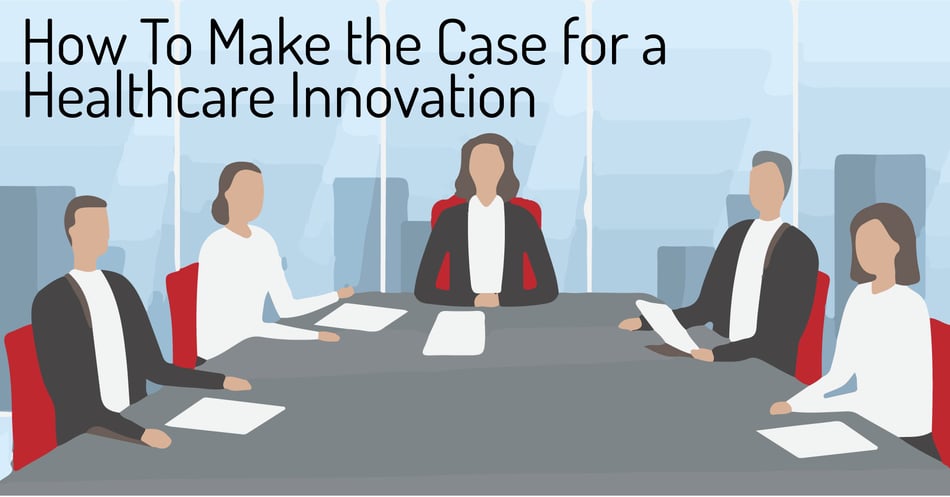How To Make the Case for a Healthcare Innovation

Every successful organization, from a small grassroots group to a global corporation, has a way for ideas to percolate through the system and find their way to the top decision-makers. Human ingenuity can come from anywhere, including cost-saving ideas (the matchbox), ways to attract new demographics (Flamin' Hot Cheetos), retain current customers (Starbucks), and of course, launch completely new products (PlayStation). From our last post, we know that hospitals and healthcare systems allocate their budgets in advance, with limited protocols for integrating innovations. How can the individual with an idea get that innovation in front of the right people at the right time, and of course, in the right way? In today's post, we'll explore one method to get you there.
Common to many innovation stories is how much the individual had to persist (and argue, and come back with more data, and remind, and present, and on and on) before their idea is accepted. It's extremely hard to introduce a change to a system, especially one that has tried-and-true protocols and seems successful enough (just ask Ignaz Semmelweis). But that doesn't mean it isn't the better or right thing - sometimes even the critical thing - to do. So, how do we handle it when it is necessary? One approach to introducing change to an organization is the "diffusion of innovations" theory, which emphasizes that change takes time and tends to progress through the system slowly, from early adopters to laggards. When it comes to an innovation in healthcare, consider this theory on the following scales:
- The adoption of an innovation on a national scale, from early adopting systems to finally achieving Standard of Care. An example of this is the use of electronic health records.
- The adoption of an innovation at a system-wide level, requiring multiple steps up the corporate ladder. An example at this scale would be the adoption of preventive biocidal materials in patient rooms to reduce hospital-associated infections.
- The adoption of an innovation that requires personal buy-in by each staff member. The best example of this scale is hand hygiene, which must be adopted and re-adopted by every staff member into perpetuity.
The largest scale of adoption, #1 above, is typically handled by many cooperating organizations and agencies, often involving policy changes, professional organizations, and data reporting. The smallest scale, #3, is an every-day experience at every hospital, where changes in protocols, organization, and products require staff to be trained, supported, and encouraged to adopt the new approach. In the middle is the scale where an individual with an idea - something they came up with, or a product they encountered - wants to bring the innovation to their facility, but requires buy-in from corporate leaders and department supervisors.
Over the next few posts, we will explore how you can make this happen because we all know that, no matter how heavy the lift, certain changes are imperative to improve patient care. This is what we will cover:
Part I: The first step in taking an idea to decision-makers is to "do your homework," that is, collect the data that supports the innovation, put that data in the context of your facility, and use the result to predict likely outcomes of the innovation. We will explore how to collect this data and what you'll need to translate that data to your own facility.
Part II: Next, you need to be able to present potential benefits and risks. This step demonstrates that you have considered all the angles of this innovation, even the ways it could go wrong. We will show you ways to use your research as well as proven methods to work through risks and benefits.
Part III: Making the business case, including calculating return on investment, connecting to a facility or system strategic plan, and a focus on costs, both known and potential.
With these three steps, you will be prepared to take the steps towards making an idea into a reality. Stay with us as we explore these topics in upcoming posts. And who knows, when we're finished, maybe you'll be ready to help your facility make a critical change!
![EOScu Logo - Dark - Outlined [07182023]-01](https://blog.eoscu.com/hubfs/Eoscu_June2024/Images/EOScu%20Logo%20-%20Dark%20-%20Outlined%20%5B07182023%5D-01.svg)





